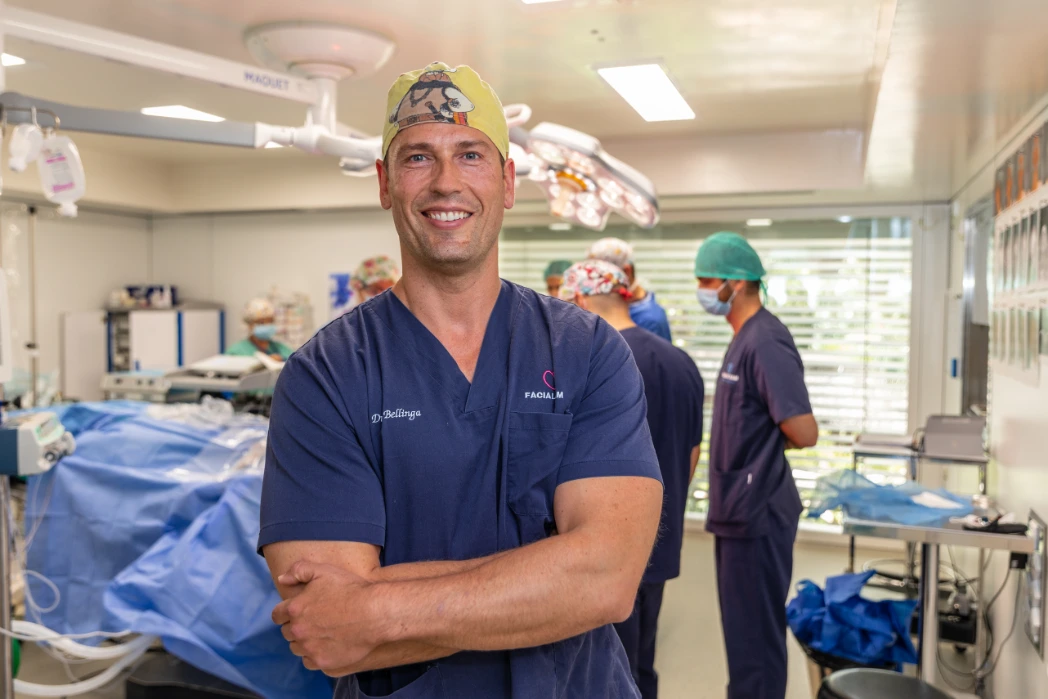Facial Lipo Feminization: Enhancing Femininity Through Advanced Fat Grafting

Understanding the distinctions in fat distribution between men and women is essential, particularly when aiming for facial feminization. While hormone therapy does aid in fat redistribution, it doesn’t always achieve the desired results on its own.
More than two decades ago, Dr. Sydney Coleman introduced the concept of autologous fat grafting. Since then, advancements have been made leading to the refined standards and protocols used in today’s facial lipo feminization procedures. The primary goal? To strategically redistribute fat, accentuating the feminine characteristics of the face.
Why Opt for Facial Fat Transfer?
- volume enhancement: Boosting areas such as the cheeks, around the eyes, the nose vicinity, and lips with microfat;
- skin rejuvenation: Leveraging the nourishing and reviving impact of fat transfer on skin quality using nanofat;
- complementary procedure: The recent microfat and nanofat grafting methods allow this procedure to be paired seamlessly with forehead surgery, ensuring the best aesthetic outcomes.
The Procedure Explained Facial Lipo Feminization (FLF) involves extracting fat, typically from the abdomen, thighs, or hips. After purification, this fat is then relocated to specific facial areas, delivering a plumper and more feminine appearance.
Depending on the volume of fat needed and individual preferences, the procedure can be performed under general or local anesthesia with IV sedation. One notable advantage? Using one’s own fat minimizes rejection risks.
Understanding the Techniques: Lipofilling, Microfat, and Nanofat
- Traditional Lipofilling: Earlier, fat was injected with large cannulas due to concerns over adipocyte damage. However, this method often resulted in less fat survival and irregular surfaces.
- Microfat: Advanced processing allows for injection via microcannulas, ensuring graft survival and reducing post-surgery irregularities.
- Nanofat: This involves further filtering to retain growth factors, which are then injected superficially to enhance skin texture, tackle wrinkles, and correct pigmentation issues.
Key Treatment Areas
The eyes and mouth are pivotal in expressing gender identity. Fat injections mainly target the cheeks, around the eyes, and lips, but other facial areas can also benefit in terms of improved skin quality.
Understanding Duration and Reabsorption
While fat serves as a “permanent filler”, there’s still a partial reabsorption phase post-procedure, typically concluding around 6-9 months. Factors affecting this reabsorption include the donor fat quality, graft area, and individual patient characteristics. Sometimes, multiple sessions might be required for optimal volume enhancement.
Post-Procedure Care and Recovery
After undergoing Facial Lipo Feminization, it’s imperative to follow the prescribed post-operative care to ensure optimal results and recovery. Here’s a step-by-step guide to aid you during this phase:
Scar Care
- Rosehip Oil Application: Starting one week post suture removal, apply Rosa Mosqueta or Rosehip oil to the donor area. Gently massage the oil onto the area every morning and evening. Continue this routine for 3-12 months for best results.
- Scar Gel Treatment: Two weeks after the suture removal, begin using Dermatix or a similar scar gel on the donor area. We recommend alternating between rosehip oil and scar gel — apply scar gel in the mornings and rosehip oil in the evenings. This should be maintained for 3-12 months.
Other Important Considerations
- Volume Changes: In the initial months following the procedure, it’s natural to notice volume fluctuations in the treated areas. This can often be attributed to inflammation. Additionally, a portion of the transplanted fat may undergo reabsorption. It’s essential to wait for at least 9 months post-surgery before considering any additional volume augmentation.
- Sutures: Some patients might receive self-dissolving sutures, eliminating the need for manual removal. If you have these stitches, they will naturally dissolve within 4-10 weeks post-surgery.
- Sun Exposure: To protect the treated areas, particularly the incision zones, avoid direct sun exposure during the first year post-surgery. Always use a high-factor sunscreen on the incision areas when stepping out.
Remember, adhering to these post-operative instructions closely not only ensures a smoother recovery but also maximizes the aesthetic outcomes of your procedure.
Learn more about Facial Lip Feminization
Do you want to learn more about Facial Lipo Feminization or do you have other burning questions about Facial Feminization Surgery?
We offer free consultation session with our surgeons to help you get started with your journey.


